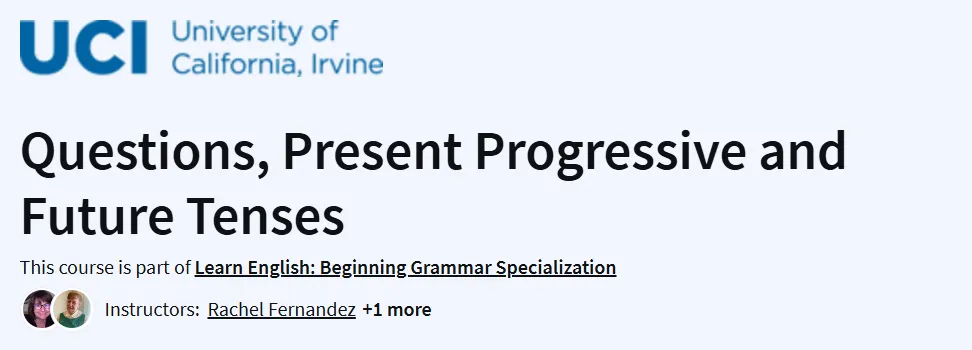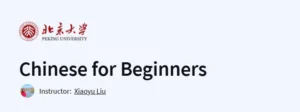What you will learn in Questions, Present Progressive and Future Tenses Course
Form information questions in the simple present tense.
Understand the difference between count and non-count nouns.
Use the present progressive tense to describe actions happening now.
Distinguish between the simple present and present progressive tenses.
Express future intentions using “be going to” and the present progressive.
Discuss abilities using the modal verb “can”
Program Overview
Information Questions Simple Present
⏳ 2 hours
- Learn question words and how to form information questions in the simple present.
- Understand the structure of questions like “Where are you?” and their responses.
Count/Noncount Nouns & Present Progressive
⏳ 2 hours
- Distinguish between count and non-count nouns.
- Learn to ask questions using “How many” and “How much”.
- Understand the present progressive tense to describe ongoing actions.
Present Progressive Question & Signal Words
⏳ 2 hours
- Form yes/no and information questions using the present progressive.
- Learn signal words that indicate the use of the present progressive.
- Compare the simple present and present progressive tenses.
Future Forms & Can
⏳ 2 hours
- Use “be going to” and the present progressive to talk about future plans.
- Discuss abilities using the modal verb “can”.
- Understand the difference between future intentions and predictions.
Get certificate
Job Outlook
Enhances language proficiency for careers in customer service, teaching, and administration.
Provides a solid foundation for advanced English language studies.
Completing this course can bolster qualifications for roles requiring strong communication skills.
Specification: Questions, Present Progressive and Future Tenses
|
FAQs
- No advanced grammar background is required.
- Introduces the basics of question structures clearly.
- Explains the present progressive tense with examples.
- Covers future tense forms such as “will” and “going to.”
- Teaches question formation with “wh-” words (who, what, when, etc.).
- Explains yes/no questions using auxiliaries like “do” and “is.”
- Provides exercises for both spoken and written questions.
- Builds confidence in everyday conversations and practice.
- Explains how to describe actions happening right now.
- Shows the difference between simple present and present progressive.
- Provides examples like “I am studying English” or “She is working.”
- Encourages practice through dialogues and daily scenarios.
- Teaches “will” for predictions and spontaneous decisions.
- Explains “going to” for plans and intentions.
- Covers present progressive for scheduled future events.
- Provides exercises for comparing and practicing different forms.
- Suggested practice: 2–4 hours per week.
- Encourages daily short exercises for better retention.
- Includes listening, speaking, reading, and writing activities.
- Regular use in conversations helps master tenses faster.





